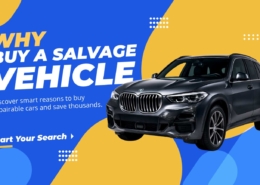 https://auction.ridesafely.com/images/2018/10/top-5-reasons-buy-at-car-auctions-banner.jpg
865
1440
RideSafely
/images/2025/01/ridesafely-logo.svg
RideSafely2025-11-14 10:28:342025-11-17 13:56:42Top 5 Reasons to Buy Your Next Vehicle at a Car Auction
https://auction.ridesafely.com/images/2018/10/top-5-reasons-buy-at-car-auctions-banner.jpg
865
1440
RideSafely
/images/2025/01/ridesafely-logo.svg
RideSafely2025-11-14 10:28:342025-11-17 13:56:42Top 5 Reasons to Buy Your Next Vehicle at a Car AuctionAt RideSafely, we help you navigate the process of buying a salvage electric vehicle (EV) at auction with confidence. EVs deliver modern performance and energy efficiency, but salvage status brings added complexities—especially around battery health, transport logistics, and component condition. Here’s what you need to know before you bid.
Extended Auction Storage Drains EV Batteries Rapidly
Unlike conventional gas vehicles, electric vehicles have two battery systems—the high-voltage lithium-ion pack and the low-voltage 12V battery. Salvage EVs often sit idle for weeks or months at auction yards.
- Lithium-ion batteries gradually discharge, especially in cold or hot climates. A fully drained pack may become irreversibly damaged.
- 12V system powers the vehicle’s control modules and safety systems. If the 12V battery is dead, the car may not respond to key fob commands or open electronically latched doors.
- Key tip: Salvage EVs stored long-term without battery maintenance may require costly reconditioning or outright battery replacement.
Transporting a Non-Running EV: More Complex Than It Looks
A non-operational EV isn’t as easy to move as a gas-powered car. If the battery is flat, you can’t shift it into neutral or enable tow mode. This creates major obstacles during loading and unloading.
Problems You May Face
- Activation required: The 12V battery must be temporarily recharged or jumped to “wake up” the system.
- Shifting challenge: Most electric vehicles (EVs) require electronic commands to shift into transport or tow mode. This isn’t possible without sufficient charge.
- Limited equipment: Most transporters don’t carry portable chargers, OBD-II tools, or EV-compatible boosters.
- Unloading delays: Forklifts may be available at pickup points but not at delivery locations. If the vehicle can’t roll, unloading off a high-deck trailer becomes a significant risk.
Visual Listings May Hide Critical Missing Components
Auction listings rarely reveal the entire truth about a salvage electric vehicle. Even if photos show a clean exterior, essential systems may be missing under the surface.
Common Hidden Issues
- Missing high-voltage battery packs: Especially in vehicles designated as “NY MV-907A” or “Mechanical Damage.”
- Disconnected cooling or powertrain components: EVs have intricate thermal management systems that may not be fully intact.
- Software locks or dealer-only resets: Even after repairs, certain electric vehicles (EVs) may require an OEM software reset to prevent faults or re-enable key systems.
Always treat inoperable salvage EVs as non-functioning shells unless you can verify key component presence and condition in advance.
Understanding how to identify damage and interpret salvage titles is essential. For a more detailed breakdown, refer to our guide to salvage titles, which covers FD (Frame Damage), MC (Mechanical), and PR (Partial/Incomplete Repair).
Key Questions to Ask Before Buying a Salvage EV
Use this checklist to avoid costly surprises:
- Does the listing confirm the presence of the high-voltage battery?
- Are photos available for the underbody and battery tray?
- Was the vehicle listed as “Run & Drive” or “Stationary”?
- Are there signs of impact to the battery compartment?
- Is the 12V system intact and free of corrosion or disconnection?
- Has the HV disconnect (orange plug) been removed?
If any of these are unclear, please get in touch with auction support or assume the worst-case conditions.
Project EVs Require High Skill and Specific Tools
Salvage EVs can yield significant value—for those with the experience, access to parts, and tools to restore them. Unlike combustion engines, EVs require:
- High-voltage safety protocols
- Specialized diagnostic tools (e.g., Tesla Toolbox, Nissan Consult)
- OEM wiring diagrams and torque specs
- Thermal management fluid handling expertise
We strongly advise only experienced EV mechanics or shops to handle salvage EV restoration projects.
Salvage EV Investment: Know Your Exit Strategy
Buying a salvage EV for parts? The market is strong for:
- EV battery modules
- Drive motors
- Infotainment and interior electronics
- Charging components (OBCs, inverters, converters)
Learn which components retain value by exploring our list of valuable parts you can salvage from a totaled car.
If your goal is resale after repair, note:
- Salvage EVs require a reconstruction process, re-inspection, and re-titling as rebuilt vehicles.
- Full coverage insurance on rebuilt titles may be limited or harder to obtain.
- A rebuilt title reduces the resale value compared to clean title EVs.
Whether you’re buying for parts or resale, you can turn profits while learning how the salvage market works. EVs offer unique component value when dismantled strategically.
Recommended Pre-Purchase Evaluation Flow
| Step | Action | Next Step |
|---|---|---|
| 1 | View EV listing on the auction site | Confirm high-voltage (HV) battery presence |
| 2 | Confirm HV battery presence in photos or description | Check for “Run & Drive” status |
| 3 | Check if the vehicle is marked as operable | Is the vehicle operable? |
| 4 | If Yes, vehicle is operable If No, vehicle is not operable | Bid with caution and verify transport readiness Verify transport capabilities and check unloading readiness |
| 5 | Check if transport/unloading can be handled at destination | Can you or your mechanic restore the EV? |
| 6 | If Yes, you have the expertise/tools If No, not confident in restoring | Proceed with bidding Avoid bidding or purchase only for parts |
If you plan to restore and title a salvage EV for road use, be sure to familiarize yourself with your state’s process of removing a salvage title. Regulations vary by jurisdiction and may impact your registration timeline.
Summary: Smart Buyers Ask, Verify, and Prepare
Before committing to a salvage EV purchase, be ready for:
- Dead batteries and immobilization at pickup
- Non-obvious missing parts
- Complex and EV-specific transport issues
- High repair costs with limited resale margin
If you’re technically capable or purchasing for parts, salvage EVs can deliver tremendous savings. But without preparation and clarity, they can become costly and frustrating endeavors.
Ready to start bidding on electric vehicles? Explore used and repairable salvage EV listings with transparent pre-bid pricing and a flat-rate RideSafely buy fee. Don’t have a dealership license? At RideSafely, anyone can buy cars at auction without a bid card or dealer license—making it easy to tap into the growing salvage EV market.
Salvage EV Buying FAQs
Can I drive a salvage EV immediately after purchase?
No. Salvage EVs are typically inoperable at the time of sale. They often require diagnostic checks, battery recharging, and possible part replacement before becoming drivable. Additionally, they must be re-titled and pass inspection before legal road use.
Are salvage EVs safe to repair and drive?
Salvage EVs can be safe if repaired by a qualified technician following OEM specifications. However, improper repairs—especially involving high-voltage systems—can pose safety risks. Always inspect for structural damage and ensure components like the battery and cooling system are intact.
What should I check before bidding on a salvage EV?
Verify the presence of the high-voltage battery, inspect the photos for damage or missing parts, check if it’s listed as “Run & Drive,” and confirm if the vehicle can be placed in tow mode. If this information is missing, assume worst-case scenarios.
Can I remove a salvage title from an EV?
Yes, but it depends on your state’s DMV requirements. You’ll typically need to complete repairs, pass a salvage inspection, and submit proof of repairs. Learn more in our Salvage Title Removal Guide.
How much does it cost to replace an EV battery in a salvage vehicle?
Replacement costs vary widely by make and model, but can range from $4,000 to over $15,000. Always factor this into your bidding strategy—especially if the auction listing doesn’t confirm battery presence.
Can I buy a salvage EV without a dealer license?
Yes. Platforms like RideSafely allow public buyers to purchase salvage vehicles without a dealer license or bid card. Just register for an account and follow the bidding process.






Leave a Reply
Want to join the discussion?Feel free to contribute!